-
Robots to assist humans in mitigating, recovering from future natural and man-made disasters
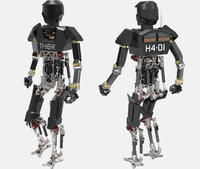
The goal of DARPA Robotics Challenge (DRC) is spur development of advanced robots that can assist humans in mitigating and recovering from future natural and man-made disasters. Seven teams will receive DARPA support to compete with an ATLAS Robot in 2013.
-
-
Sandia hosts annual Robot Rodeo
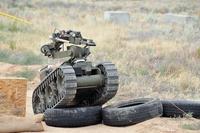
Sandia National Laboratories is hosting the seventh annual Western National Robot Rodeo and Capability Exercise, a lively and challenging five-day event that draws civilian and military bomb squad teams from across the country to see who can most effectively defuse dangerous situations with the help of robots.
-
-
Robot makes inspecting power lines simple, inexpensive
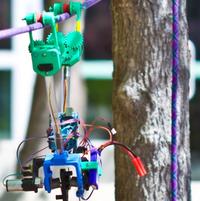
Mechanical engineers invented a robot designed to scoot along utility lines, searching for damage and other problems that require repairs. Made of off-the-shelf electronics and plastic parts printed on an inexpensive 3D printer, the SkySweeper prototype could be scaled up for less than $1,000, making it significantly more economical than the two models of robots currently used to inspect power lines.
-
-
Cockroaches gait informs search-and-rescue robot design
More than 70 percent of Earth’s land surface is not navigable by wheeled or tracked vehicles, so legged robots could potentially bridge the gap for ground-based operations like search and rescue and defense. New insights on how cockroaches stabilize could help engineers design steadier robots for operating on difficult terrain.
-
-
Jumping soft robots avoid obstacles during search and rescue operations
These soft robots can already stand, walk, wriggle under obstacles, and change colors. Now researchers are adding a new skill to the soft robot tool kit: jumping. Researchers make the robots jump by using combustible gases. This ability to jump could one day prove critical in allowing the robots to avoid obstacles during search and rescue operations.
-
-
NASA engineers building sturdy blue-collar mining robot
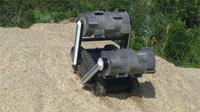
After decades of designing and operating robots full of scientific gear to study other worlds, NASA is working on a prototype that leaves the delicate instruments at home in exchange for a sturdy pair of diggers and the reliability and strength to work all day, every day for years.
-
-
Four-legged robotic mule now voice-controlled
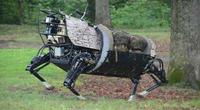
DARPA researchers demonstrated new advances in the Legged Squad Support System (LS3) four-legged robot’s control, stability, and maneuverability, including “Leader Follow” decision making, enhanced roll recovery, exact foot placement over rough terrain, the ability to maneuver in an urban environment, and verbal command capability
-
-
Marine robot completes 9,000 mile cross-Pacific journey, setting new world record
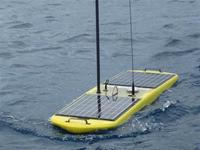
A wave-powered robot completes a 9,000 nautical mile (16,668 kilometers) scientific journey across the Pacific Ocean to set a new world record for the longest distance traveled by an autonomous vehicle
-
-
Two small, long-endurance UAVs unveiled

Danvers, Massachusetts-based CyPhy Works, a new robotics company, the other day unveiled two revolutionary small unmanned air vehicles (UAVs): EASE and PARC; the Extreme Access System for Entry (EASE) is an indoor flying UAV to help police, soldiers, and inspectors remain at safe standoff distances; the Persistent Aerial Reconnaissance and Communications (PARC) is designed to fly vertically and remain hovering for unprecedented long durations without operator intervention
-
-
Squirrels-inspired deceptive robots to help the military

Using deceptive behavioral patterns of squirrels and birds, researchers have developed robots that are able to deceive each other; the applications could be implemented by the military in the future
-
-
Tetrapod robot developed for investigative, recovery work inside post-accident nuclear plants
Toshiba has developed a tetrapod robot able to carry out investigative and recovery work in locations which are too risky for people to enter; the multiple joints of its legs are controlled by a dedicated movement algorithm which enables the robot to walk on uneven surfaces, avoid obstacles, and climb stairs, securing access into areas which are challenging to be reached by wheeled robots or crawlers
-
-
Flying robot avoids obstacles
Researchers have created an autonomous flying robot which is as smart as a bird when it comes to maneuvering around obstacles; able to guide itself through forests, tunnels, or damaged buildings, the machine could have tremendous value in search-and-rescue operations
-
-
"Stutter jump" could improve performance of search and rescue robots
A new study shows that jumping can be much more complicated than it might seem; in research that could extend the range of future rescue and exploration robots, scientists have found that hopping robots could dramatically reduce the amount of energy they use by adopting a unique two-part “stutter jump”
-
-
The DARPA Robotics Challenge begins

The DARPA Robotics Challenge (DRC) began yesterday, and DARPA wants to know whether you will be part of it; DARPA introduces teams for Tracks A and B, opens registration for Tracks C and D, and launches simulation software for download; the goal of the competition is to help advance robotic technology to the point where it can have a tangible impact on humanitarian assistance and disaster relief
-
-
Smart robots to advance science, perform rescue missions
Researchers see a day in the not-so-distant future when intelligent robots will be working alongside humans on a wide range of important tasks from advancing science, to performing deep sea rescues, to monitoring our natural habitats; it is a bold leap from the pre-programmed factory robots and remote-controlled drones we are most familiar with today
-
More headlines
The long view
AI-Controlled Fighter Jets May Be Closer Than We Think — and Would Change the Face of Warfare
Could we be on the verge of an era where fighter jets take flight without pilots – and are controlled by artificial intelligence (AI)? US R Adm Michael Donnelly recently said that an upcoming combat jet could be the navy’s last one with a pilot in the cockpit.
